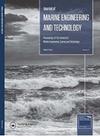在150,000m3 DFDE LNG运输船上改装再液化装置的可行性
IF 4.4
4区 工程技术
Q1 Engineering
Journal of Marine Engineering and Technology
Pub Date : 2022-05-17
DOI:10.1080/20464177.2022.2073805
引用次数: 1
摘要
液化天然气贸易类型的变化导致对具有更大运营灵活性和高效推进装置的船舶的需求增加。这导致了对重新液化蒸发气(BOG)并将其返回货舱并将其作为货物出售或燃烧BOG或燃油的能力的需求,这取决于当时的相对成本。这使得能源公司能够将液化天然气转移到季节性高峰需求高的市场,并利用最高价格,但仍能满足长期SPA。本文的研究是通过定性数据收集和随后使用市场管理工具进行的分析来确定技术可行性。从这一点开始,数据被输入经济分析,以产生定量数据,从而确定许多市场情景的最终投资决策。具有再液化能力的液化天然气运输船与不具有再液化功能的运输船有着积极的区别。它们具有更大的运营灵活性,从而提高了其竞争地位。他们可以要求更高的租船费率,因为卸载货物数量的增加会增加收入。它们具有较低的环境足迹,因为不需要对GCU中过量的BOG进行热氧化。分析表明,在150000立方米双燃料柴电(DFDE)液化天然气运输船上改造再液化工厂在技术上是可行的。经济可行性更为复杂,取决于形势,并受到市场力量、环境立法和政治干预的影响。本文章由计算机程序翻译,如有差异,请以英文原文为准。
The viability of retro-fitting a re-liquefaction plant onboard a 150,000m3 DFDE LNG carrier
Changes in the type of LNG trading has resulted in an increased demand for vessels with greater operational flexibility and efficient propulsion plants. This has led to the demand for the capability to re-liquefy boil-off-gas (BOG) and return it the cargo-tanks and sell it as cargo or burn BOG or fuel oils depending on the relative costs at the time. This allows energy companies to divert LNG to markets with high seasonal peak demand and take advantage of highest prices, yet still meet long-term SPA's. The research in this paper was conducted by means of qualitative data collection and subsequent analysis using market management tools to ascertain the technical viability. From this point, the data was fed into economic analysis to produce quantitative data that allowed for a determination for a final investment decision for a number of market scenarios. LNG carriers with re-liquefaction capability are positively differentiated from those without it. They are capable of greater operational flexibility, and as a result, their competitive position is improved. They can demand higher charter rates as the increase in cargo quantity offloaded results in increased revenue. They present a lower environmental footprint as there is no requirement to thermally oxidise excess BOG in a GCU. The analysis shows it is technically viable to retrofit a re-liquefaction plant onboard 150,000 m3 Dual Fuel Diesel Electric (DFDE) LNG carriers. The economic viability is more complicated, situation-dependent, and influenced by market forces, environmental legislation, and political interference.
求助全文
通过发布文献求助,成功后即可免费获取论文全文。
去求助
来源期刊

Journal of Marine Engineering and Technology
工程技术-工程:海洋
CiteScore
5.20
自引率
0.00%
发文量
0
审稿时长
>12 weeks
期刊介绍:
The Journal of Marine Engineering and Technology will publish papers concerned with scientific and theoretical research applied to all aspects of marine engineering and technology in addition to issues associated with the application of technology in the marine environment. The areas of interest will include:
• Fuel technology and Combustion
• Power and Propulsion Systems
• Noise and vibration
• Offshore and Underwater Technology
• Computing, IT and communication
• Pumping and Pipeline Engineering
• Safety and Environmental Assessment
• Electrical and Electronic Systems and Machines
• Vessel Manoeuvring and Stabilisation
• Tribology and Power Transmission
• Dynamic modelling, System Simulation and Control
• Heat Transfer, Energy Conversion and Use
• Renewable Energy and Sustainability
• Materials and Corrosion
• Heat Engine Development
• Green Shipping
• Hydrography
• Subsea Operations
• Cargo Handling and Containment
• Pollution Reduction
• Navigation
• Vessel Management
• Decommissioning
• Salvage Procedures
• Legislation
• Ship and floating structure design
• Robotics Salvage Procedures
• Structural Integrity Cargo Handling and Containment
• Marine resource and acquisition
• Risk Analysis Robotics
• Maintenance and Inspection Planning Vessel Management
• Marine security
• Risk Analysis
• Legislation
• Underwater Vehicles
• Plant and Equipment
• Structural Integrity
• Installation and Repair
• Plant and Equipment
• Maintenance and Inspection Planning.
 求助内容:
求助内容: 应助结果提醒方式:
应助结果提醒方式:


